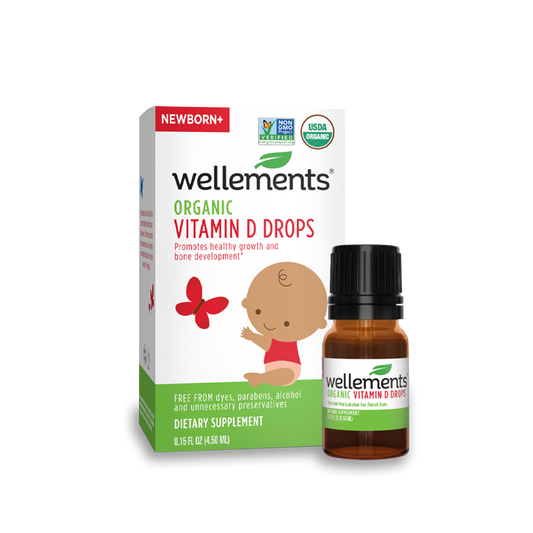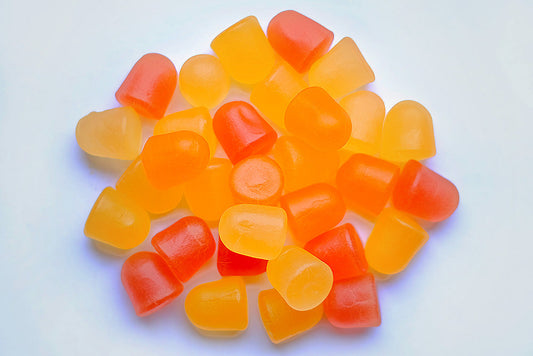How To Add Vitamin D to Your Child's Diet
| updated:Share

Children, specifically infants, and toddlers, grow at exceptional rates. It is not unusual for parents to buy new clothing monthly because their little one continues to outgrow outfits.
The rapid development of children is made possible through adequate nutrition. The more focused your toddler's diet, the healthier they will be. Unfortunately, many children become deficient in one specific nutrient: vitamin D. It is one of the most essential nutrients in your child's diet, but because they do not receive sun exposure in their early months, it is necessary to supplement the nutrient.
Why Vitamin D Is Important for Your Child
The primary job of vitamin D is calcium absorption and bone and teeth development. Without enough vitamin D, your child can develop weak bones, potentially developing rickets.
Rickets is a condition that causes deformities in bones, leading to fractures and breaks. The disease is tied to vitamin D deficiencies.
Additionally, an inadequate supply of vitamin D can interfere with bone mass and height. Every child is born with pre-programmed genetics that force the body to grow and develop. With a balanced diet, the body may be capable of meeting genetic expectations.
Finally, vitamin D regulates several biological functions. Some of the most critical jobs of vitamin D include:
- Immune system regulation
- Cell growth
- Insulin production

How Much Vitamin D Does My Child Need?
The amount of vitamin D your child needs depends on their age. Infants and children up to a year need an average of 400 IUs or ten mcg per day. Older children need about 600 IUs or 15 mcg daily.
According to medical professionals, a parent does not need to be hawkish about meeting the guidelines. Your child can average the recommended daily dose, meaning you can record and review your little one's intake for several days and average it out.
What Are the Best Vitamin D Sources for My Child?
Sun exposure is one of the best ways to receive vitamin D. Unfortunately, depending on your child's age, sun exposure might not be recommended. Therefore, professionals recommend children take a vitamin D supplement, such as Wellements Vitamin D Drops.
4.2 /
5.0
(86)
86
total reviews
Vitamin D Drops
Sale price
$11.99
If your child has graduated to solid foods, there are many ways to get the vitamin D they need. Some of the best sources of the nutrient include:
- Fortified milk and foods
- Salmon
- Canned tuna
- Eggs
- Cheese
- Yogurt

How Do I Know If My Child Is Vitamin D Deficient?
Many people with vitamin D deficiency will not have any symptoms. However, if they do show symptoms, the most likely signs may include the following:
- Muscle weakness
- Cramps
- Lethargy
- Irritability
- Bone pain
The signs may become evident and severe depending on your child's age. Any time your child is acting different from their usual selves, take them to their pediatrician.
Foods to Give Your Child for a Daily Source of Vitamin D
Some foods are so rich in vitamin D that your child can get their recommended daily dose in small portions. For example, one ounce of salmon contains 102 IU of vitamin D. Additionally; you can feed your child food and drink fortified with vitamin D. Half a cup of fortified milk contains roughly 49 IUs. Fish, dairy, and fortified products are your child's best sources of vitamin D.
Vitamin D is a necessary vitamin for healthy growth and development. A vitamin supplement is often recommended depending on your child's age and diet. Anytime you have concerns about your child's nutritional needs, you should consult their pediatrician for specific advice.

Sources:
https://www.babycenter.com/toddler/feeding/vitamin-d-in-your-childs-diet_10324696
https://www.chop.edu/news/health-tip/vitamin-d-supplements-what-parents-should-know
https://www.cdc.gov/nutrition/infantandtoddlernutrition/vitamins-minerals/vitamin-d.html
https://www.nationwidechildrens.org/conditions/vitamin-d-deficiency
https://kidshealth.org/en/parents/vitamin-d.html



